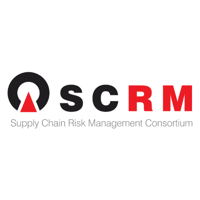Analyst Insight: Supply chain executives are developing their 2025 strategies to contend with...
Understanding Supply Chain Process Maturity Will Be Critical in 2023
Analyst Insight: After three years of pandemic-driven disruptions, supply chain executives are developing new strategies for contending with high inflation, economic slowdown, talent shortages, excess inventory and a continued level of global uncertainty. But understanding the maturity of their supply chain processes is a crucial first step.
Many executives are re-evaluating their product portfolios, entertaining the thought of re-scaling their supply chains, including a move to near-shoring and onshoring of manufacturing and supply, based on the growing realization that China is no longer an entirely reliable partner. Executives are also considering options to improve supply chain visibility upstream to their suppliers and downstream to customers, while simultaneously addressing environmental, social and governance (ESG) issues within their global supply chains.
There are a number of new and significant supply chain issues that must be addressed in 2023 and beyond. In particular, supply chain process maturity will become a critical success factor for survival. In a 2022 report, Gartner emphasized three major questions to be asked: First, what are the seven key supply chain processes that are essential to achieving end-to-end supply chain excellence? (Sourcing and procurement, supply chain planning, transportation, warehousing and distribution, manufacturing, store operations and services.) Second, what is supply chain resilience? (Gartner’s definition: “Avoiding, absorbing and recovering from the impact of major disruptions and continuing to operate under stress.”) And third, why is supply chain risk management important? (Because, according to Gartner, failure to practice it can negatively impact company performance, cause reputational and financial damage, and threaten a company’s sustainability efforts.)
Unfortunately, most companies don’t approach supply chain management from an end-to-end perspective, and are therefore not ready to move forward with a bona fide supply chain risk program. The effort must begin with the building out of a model to highlight a company’s process-maturity status as it currently stands. After all, knowing the extent of the problem is half the solution. Supply chain process maturity improvement equates to future positive financial performance and a strategic advantage.
Outlook: The pandemic has brought supply chain management to the forefront. In 2023, supply chain executives will have to deal with multiple issues. But it’s especially vital that they take a hard look at their supply chain process maturity. That’s the best way to ensure sustainability in an ever-changing world.
SUPPLY CHAIN VISIBILITY
SupplyChainBrain | Gregory L. Schlegel, Founder, Supply Chain Risk Management Consortium



